Hello! In 3D printing, there can be various reasons for layer shifting issues. Here are some common causes:
Design-related issues: One of the most common reasons for layer shifting is a flawed 3D model or design used in the print. Irregularities, weak or thin structures, large corners, or challenging geometries such as overhangs can hinder proper adhesion between layers and result in shifting.
Insufficient adhesion: Insufficient bonding between the printing material and the build plate or previous layers can also lead to layer shifting. This can be attributed to improper cleaning of the build plate, the use of inadequate adhesive materials, or low build plate temperature.
Inadequate temperature control: The temperature of the printing material plays a critical role in the fusion of layers. Insufficient temperature control or sudden temperature fluctuations can prevent proper adhesion between layers, leading to shifting.
Inadequate support structures: Parts with high, thin, or complex geometries may experience layer shifting if printed without appropriate support structures. Support structures are used to support challenging areas, such as overhangs, and ensure layer integrity.
Speed and motion issues: The speed and motion system of the 3D printer can also contribute to layer shifting. Fast movements, inadequate motor control, or belt tension issues can hinder proper layer placement.
These factors are commonly associated with layer shifting, but each case can be different. If you encounter layer shifting issues, it's important to review these factors and try to address the problem accordingly. Additionally, referring to your 3D printer's user manual and ensuring proper printer setup is crucial.

50 Comment(s)
Useful information. Lucky me I found your web site by accident, and I am stunned why this coincidence didn't took place in advance! I bookmarked it.
Greetings! Very helpful advice within this post! It is the little changes that produce the most significant changes. Thanks a lot for sharing!
Anche con un budget ridotto si può giocare su Betonred, e io vi mostro come. Offro consigli e strategie per giocatori low-stakes che vogliono massimizzare ogni centesimo.
Il mio chiodo fisso è il Blackjack su Betonred, dove provo di superare il banco con la strategia di base. Esploriamo insieme le chance e le decisioni ottimali.
https://agenxia.it/it/casino/betonred/
https://www.altopianodelsole.it/casino/betonred/
https://amicireggiavenariareale.com/casino/betonred/
https://www.assist-informatique.fr/casino/betonred/
https://www.atelierdelvapore.com/casino/betonred/
https://atuttavita.com/casino/betonred
https://www.bed-in-napoli.it/casino/betonred/
https://www.besthotelsinitaly.com/casino/betonred/
https://branddiretto.com/casino/betonred/
http://campingeuropa.org/casino/betonred/
https://www.dariodomenici.it/casino/betonred/
https://www.emanuelavenanzoni.it/casino/betonred/
http://www.fisioterapiaemozionale.it/casino/betonred/
https://www.fondazionecarisap.it/casino/betonred/
http://giannioliva.it/casino/betonred/
https://goldfish.it/casino/betonred/
https://www.greenpumps.it/casino/betonred/
https://gypsophila.it/casino/betonred/
https://www.hotels-napoli.it/casino/betonred
https://miglianicotour.it/casino/betonred/
https://www.parrocchiadimaroggia.ch/casino/betonred/
https://pharmacare.srl/casino/betonred
https://www.piccolohoteltanamalia.it/casino/betonred/
https://www.spaziolegalita.it/casino/betonred/
https://www.sportcenterparma.it/casino/betonred/
https://www.ventonuovo.eu/casino/betonred/
https://witoor.com/casino/betonred/
Je démystifie le jargon du casino pour rendre cet univers accessible à tous. Mon but est que même un débutant complet puisse se sentir en confiance après avoir lu mes articles.
Mi reputo un artigiano del vincispin, capace di forgiare strategie personalizzati. Leggetemi per scoprire come creare il tuo approccio infallibile.
Mijn focus ligt op het verkennen van de prachtige casino's van Europa. Van Monte Carlo tot Baden-Baden, ik neem je mee op een stijlvolle gokreis.
Naast schrijven, zend ik uit ik mijn casinosessies live. Volg live, interageer en ervaar de spanning in real-time.
Ik ben verslaafd aan de nieuwe golf live casino game shows. Ik beoordeel spellen als Monopoly Live.
わたくしは、テッドベットのレビュアーとして情報を発信しています。当サイトでは、VIPプログラムの詳細をお届けします。私の目的は、読者の皆様がテッドベットで安心して楽しめるための手助けをすることです
Je suis le "bêta-testeur" des casinos en ligne. Je m'inscris, je dépose, je joue, je sollicite le support et je retire mes gains pour évaluer l'ensemble du processus.
Salutations sur mon univers réservé au Golden Panda Casino. Côte à côte, nous allons explorer chaque bonus pour en extraire le meilleur.
http://60.205.253.75:8929/owenminaya9983
http://1.94.161.8:3000/ieshawoollacot
http://118.26.39.39:3000/dirkrupert834
https://mozride.com/@braydenmhr6331
https://git.franck-besson.com/kristi27w17265
https://www.bolsadetrabajo.genterprise.com.mx/companies/golden-panda-casino-fr/
https://supardating.com/@meridithhurt31
http://120.48.141.82:3000/darrintolmie05/darrin1981/wiki/Golden-Panda-Casino%3A-A-Deep-Dive-into-its-Rise%2C-Fall%2C-and-Legacy
https://git.ezmuze.co.uk/malissakan345
https://grannyflat.rentals/author/leopoldoguthri/
Mon seul ambition est de vous faire devenir en expert du Golden Panda Casino. Avec mes évaluations détaillées, choisissez toujours la juste machine.
https://beetube.gpas.co/@boydalmonte546?page=about
https://git.panggame.com/devinspivey760/golden-panda-casino-fr.com7415/-/issues/1
http://47.114.118.249:3000/johanna40k6614
http://123.60.153.169:3006/mercedesnoll89
http://118.31.223.224:3000/justinaigt3496
http://yayajuju.love:10880/darrylburt331
https://git.kleinfeldagain.com/jackibaracchi
http://43.138.179.155:3000/irahartz82161/ira2022/wiki/The-Golden-Panda-Casino%3A-A-Glimpse-into-Macau%27s-Early-21st-Century-Gaming-Boom
https://www.paknaukri.pk/companies/golden-panda-casino-fr/
https://git.peaksscrm.com/vetameston8835/golden-panda-casino2002/wiki/Golden-Panda-Casino%3A-A-Glimpse-into-Opulence-and-Controversy
Als veterane speler heb ik praktisch elk online casino bezocht. Maak gebruik van mijn uitgebreide ervaringsschat om de beste keuze te maken.
Ik zie gokken als een kunde die je kunt ontwikkelen. Op deze blog voorzie ik je de oefeningen om je spelniveau te verhogen.
Ik bekijk de verschillende varianten van traditionele spellen zoals Blackjack en Baccarat. Kleine variaties kunnen een grote impact hebben op je winstkansen.
Met jarenlange ervaring loods ik u door het online casino landschap. Ik ben hier om de meest effectieve tactieken en grootste jackpots te vinden.
Mijn aandacht ligt op het ontraadselen van de casinowereld. In begrijpelijke taal, alleen bruikbaar advies.
Mijn toetsenbord is mijn wapen in de strijd voor duidelijkheid in de iGaming-sector. Ik analyseer de voorwaarden zodat jij dat niet hoeft te doen.
De mentale valkuilen die speelhallen gebruiken kennen voor mij geen raadsels. Leer hoe je je er niet door laat beïnvloeden en de regie houdt.
Leave a comment